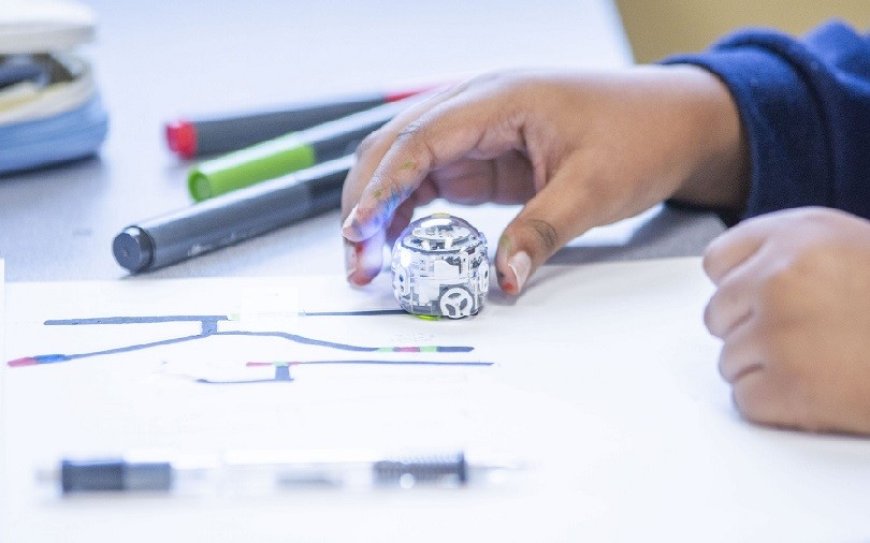Advantages of STEM education
STEM education is now on everyone's lips. This is a now the up growing trend that has high hopes, such as promotion of engineering professions

What is STEM education and why it is popular.
STEM education is now on everyone's lips. This is a now the up growing trend that has high hopes, such as promotion of engineering professions among the teens people and raising awareness of opportunities to pursue a career in engineering. Yes, natural and mathematical sciences can be very interesting; all is that to bring the main thing out and to present them correctly to students.
S-science, T-technology, E-engineering, M-mathematics - this is how this mysterious abbreviation is deciphered. STEM symbolizes the beginning of a new era and the abandonment of the outdated subject system in favor of integrated learning. Namely, this approach is 100% consistent with the competence concept of the New School.
Children get the opportunity not just to study, for example, the laws of physics, but immediately be able to test their effects in practice, creating real research projects. STEM unites all natural sciences and mathematics into one way. And most importantly, this approach allows to interest in science even those students who previously thought they had no flair for it.
- Integrated learning
STEM combines a design and interdisciplinary approach that is currently recognized by teachers around the world. In this case, the basis - the integration of science, technology, mathematics and engineering. All these areas are closely linked in practice, so studying them together is very important.
- Application of acquired knowledge in real life
Often children simply do not understand how they can apply knowledge of exact and natural sciences in the future, so the interest is not too great. STEM demonstrates how children can use the information they receive in life. Students will study not just abstract data, they are a specific project, and then - will create their own project of a particular product. Conducting entertaining experiments, children easily begin to understand complex formulas, memorize terms.
- Development of critical thinking
STEM is inextricably linked to and focused on critical thinking. Students should learn - based on experience, analogies and generalizations - to navigate independently, even in difficult situations and solve problems without assistance.
For example, in class, they have to develop a project and create a car model, and then test it. After that, the children analyze in detail why the test failed, for what reason the car did not reach the finish line, eliminate errors and repeat the start, and so on to victory.
- Confidence in their own abilities
By creating interesting projects that really work, children not only learn, but also increase their self-esteem. In this way, they become more confident and persistently achieve their goals.
- Teamwork
STEM - involves teamwork. Students work together, express their ideas and suggestions, discuss, justify their position and come to certain conclusions together - all this, of course, only benefits.
- Increasing interest in technical disciplines
One of the key tasks of STEM is to demonstrate the benefits of technical and natural specialties. Students will see that being an engineer or a mathematician is not boring at all, but on the contrary - fun and interesting. Still, among the common teaching aids are constructions, robotic systems, 3D models, measuring systems, laboratory instruments, projection tables, overhead projectors, etc.
- Innovation
STEM projects usually include six stages: task (or problem issue), discussion, design, structure development, testing, and further development. This is a special approach that allows you to both study and apply technology and science. And this provides an opportunity to create new innovative projects!
- The direct path from study to career
As you know, many university graduates either do not work at all, or change professions in a few years. There is nothing wrong with that, but it is better if at school the child will understand what he would like most. And here futurists assure that very soon most of the popular specialties will require STEM-knowledge.
Demand for such specialists as chemical engineers, computer systems analysts, robotics engineers, nuclear engineers, underwater architects, etc. And it is expected to grow more in the near future. And without STEM-education in this case cannot do.
- Preparation for rapid technical development
The world is developing at an extraordinary pace, but this is just the beginning, it will be even more interesting. Even if students do not choose a technical profession in the future, they will be fully prepared for new technologies.
But don't think that STEM is just about science. Currently, creative directions are developing no less actively, namely: industrial design, industrial aesthetics, and architecture. After all, the synthesis of science and art is now one of the most popular areas of development. Moreover, the intensification of education only in the scientific field, without the simultaneous development of artistic disciplines, will reduce the level of creativity of young people.
So, if one of the main tasks of modern education is to create conditions for the comprehensive development of students, taking into account the capabilities of each, then STEM-education is an ideal option!
